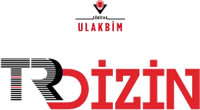Sosyal Bilgiler Dersini Ters Yüz Etmek (Reverse Social Studies Course)
Anahtar Kelimeler:
Ters Yüz Sınıf Modeli- Sosyal BilgilerÖzet
Ters Yüz Sınıf Modeli, teknolojinin eğitim sürecinde kullanıldığı, sınıf içi süreçte aktif öğrenme yöntemlerine daha fazla yer vermeye çalışan harmanlanmış öğrenme modellerinden biridir. Bu model Ters Yüz Sınıf, Ters Yüz Eğitim, Evde Ders Okulda Ödev, Dönüştürülmüş Sınıf olarak da tanımlanmaktadır. Bu modelde ters yüz etmek demek sınıf içi süreci sınıf dışına, sınıf dışındaki süreçleri ise sınıf ortamına taşımak demektir. Ters Yüz Sınıf modeli, eğitim ve öğretim uygulamalarında öğrencilerin okulda öğrendiği teorik bilgileri evde öğrenip okulda uygulama yapma fırsatı sağlayan bir metot olarak tanımlanmaktadır. Öğretmen tarafından belli bir platform üzerinden gönderilen videolar veya ek kaynaklar ile öğrenciler konuyu evde öğrenmektedir. Sınıf ortamında ise o konu ile ilgili etkinlikler yapılmaktadır. Ters Yüz Sınıf modeli, öğretmenlerin aktif öğrenme etkinliklerine ders içerisinde yeterince zaman ayırabilmesini sağlamaktadır. Öğrencilerin, öğrenmiş olduğu konuları pekiştirebilmesi, üst düzey beceri gerektiren etkinlik ve ödevleri sınıf ortamında öğretmen rehberliğinde yapabilmesi açısından avantajlar sağlamaktadır. Yurt dışında pek çok ülkede kullanılan Ters Yüz Sınıf modelinin ülkemizde kullanımı yenidir. Alanyazın incelendiğinde Ters Yüz Sınıf modelinin sosyal bilgiler dersine uygulanmasıyla ilgili yeterli araştırmanın olmadığı görülmüştür. Ortaokul sosyal bilgiler dersinde işlenen konuların pek çoğunun soyut olması, ezbere dayalı bir ders olarak görülmesi öğrenciler tarafından dersin anlaşılmasını zorlaştırmaktadır. Ters Yüz Sınıf modeli kullanılmasının öğrencileri daha aktif öğrenmeyi ise daha eğlenceli hale getirmektedir. Bu açıdan değerlendirildiğinde Sosyal Bilgiler dersinde bu modelin kullanımının faydalı olacağı düşünülmektedir. Bu çalışmanın amacı ilgili alanyazın incelenerek Ters Yüz Sınıf modeli ve eğitimde kullanılmasına yönelik bilgilere yer vermektir. Ayrıca Sosyal Bilgiler eğitiminde Ters Yüz Sınıf modeli kullanımının önemi irdelenmeye çalışılmıştır. Çalışma doküman incelemesi niteliğinde olup nitel araştırma yaklaşımı benimsenmiştir. Çalışma sonunda Ters Yüz Sınıf modelinin Sosyal Bilgiler eğitiminde kullanımıyla ilgili örnek bir uygulama sunulmuştur. Bu yöntemin Sosyal Bilgiler dersinde kullanılmasına yönelik çeşitli önerilerde bulunulmuştur.
Referanslar
Alsancak Sırakaya, D. (2015). Tersyüz sınıf modelinin akademik başarı, öz- yönetimli öğrenme hazırbulunuşluğu ve motivasyon üzerine etkisi. Doktora Tezi, Gazi Üniversitesi Eğitim Bilimleri Enstitüsü, Ankara.
Baker, J. W. (2000). The ‘Classroom Flip’: Using web course management tools to become the guide by the side. Jack A. Chambers (Ed.), Selected Papers from the 11th International Conference on College Teaching and Learning içinde, (s. 9-17). Jacksonville, FL: Florida Community College at Jacksonville.
Bergmann, J., & Sams, A. (2012).Flip Your Classroom: Reach Every Student İn Every Class Every Day. Washington: International Society for Technology in Education (ISTE).
Bristol, T. J. (2014). Educate, excite, engage. Teaching learning in Nursing, 9, 43-46.
Bishop, J. L.,& Verleger, M. A. (2013). The flipped classroom: a survey of the research. In ASEE National Conference Proceedings, Atlanta, GA.
Demiralay, R. (2014). Evde ders okulda ödev modelinin benimsenmesi sürecinin yeniliğin yayılımı kuramı çerçevesinde incelenmesi. Doktora Tezi, Gazi Üniversitesi, Eğitim Bilimleri Enstitüsü, Ankara.
Christensen, C. M., Horn, M. B., Staker, H. (2013). Is K-12 Blended learning disruptive? an introduction of the theory of hybrids. Clayton Christensen Institute. http://www.christenseninstitute.org/wp-content/uploads/ 2013/05/Is- K-12-Blended- Learning-Disruptive.pdf adresinden 15.02.2017 tarihinde erişilmiştir.
Ekmekçi, E. (2014). Flipped writing class model with a focus on blended learning. Doktora Tezi, Gazi Üniversitesi, Eğitim Bilimleri Enstitüsü, Ankara.
Enfield, J. (2013). Looking at the impact of the flipped classroom model of instruction on undergraduate multimedia students at CSUN. TechTrends, 57(6), 14-27.
Fulton, K. (2012). Upside down and ınside out: flip your classroom to improve student learning.
Learning & Leading with Technology, 39(8), 12-17.
Erdoğan, E., Akbaba, B. (2018). Should we flip the social studies classrooms? the opinions of social studies teacher candidates on flipped classroom. Journal of Education and Learning, 7(1), 116-124.
Gençer, B.G., Gürbulak, N., Adıgüzel, T. (2014). Eğitimde yeni bir süreç: ters- yüz sınıf sistemi. Proceedings of İnternational Teacher Education Conference. Sakarya: Türkiye.
Güç, F. (2017). Rasyonel sayılar ve rasyonel sayılarda işlemler konusunda ters- yüz sınıf uygulamasının etkileri. Yüksek Lisans Tezi, Amasya Üniversitesi, Fen Bilimleri Enstitüsü, Amasya.
Hamdan, N., Mcknight, P., Mcknight, K., & Arfstrom, K. M. (2013). A Review of Flipped Learning, ©,20. Retrievered from http://flipperiet.dk/wp- content/uploads/2014/03/Review-of-Flipped-Learning.pdf [accessed Apr 07 2019].
Jenkins, C.(2012). The advantages and disadvantages of the flipped classroom. Retrieved 29.07.2015 from http://info.lecturetools.com/blog/bid/59158/The-Advantages-and- Disadvantages-of-the-Flipped-Classroom.
Johnson, G. B. (2013). Student perceptions of the flipped classroom. Doctoral Disseration.
University of British Columbia.
Kara, C. O. (2016). Tıp fakültesi klinik eğitiminde “ters yüz sınıf modeli” kullanılabilir mi?.
Yüksek Lisans Tezi, Akdeniz Üniversitesi Sağlık Bilimleri Enstitüsü, Antalya.
Karadeniz, O., Ulusoy, M. (2015). 4+4+4 eğitim sistemi ile sosyal bilgiler eğitiminde ortaya çıkan kaotik durumlar hakkında sosyal bilgiler öğretmenlerinin görüşleri. Journal of Higher Education & Science/Yükseköğretim ve Bilim Dergisi, 5(1). 99-108.
Karaman, B. (2018). Ters yüz sınıf modelinin sosyal bilgiler 7. Sınıf yaşayan demokrasi ünitesinde uygulanması. Yüksek Lisans Tezi, Aydın Adnan Menderes Üniversitesi, Sosyal Bilimler Enstitüsü, Aydın.
Lage, M. j., Platt, G., Treglia, M. (2000). Inverting the classrıım: a gateway to creating an ınclusive learning envirenment. Journal of Economic Educaion,31(1), 30-43.
Miller, A. (2012). Five best practices for the flipped classroom. https://www.edutopia.org/ blog/flipped-classroom-best-practices-andrew-miller (Erişim Tarihi: 05.01.2018)
Missildine, K., Fountain, R., Summers, L., Gosselin, K. (2013). Flipping classroom to improve student performance and satisfaction. Journal of Nursing Education, 52 (10), 597-599.
Strayer, J. F. (2012). How learning in an inverted classroom influences cooperation, innovation and task orientation. Learning Environments Research, 15(2), 171-193.
Talbert, R. (2012). Inverted classroom. Colleagues, 9(1), 1-3.
Turan, Z., ve Göktaş, Y. (2015). Yükseköğretimde yeni bir yaklaşım: öğrencilerin ters yüz sınıf yöntemine ilişkin görüşleri. Yükseköğretim ve Bilim Dergisi/Journal of Higher Education and Science, 5(2), 156-164.
Yurdakul, B. (2005). Yapılandırmacılık. Demirel, Ö., (Editör), Eğitimde Yeni Yönelimler içinde (49-52). Ankara: Pegem Akademi Yayıncılık.
Zownorega, J.S. (2013). Effctiveness of flipping the classroom in a honors level, mechanics- based physics class. Masters Theses, East.
Yayınlanmış
Nasıl Atıf Yapılır
Sayı
Bölüm
Lisans
Telif Hakkı (c) 2023 Anadolu Kültürel Araştırmalar Dergisi (ANKAD)

Bu çalışma Creative Commons Attribution-NonCommercial 4.0 International License ile lisanslanmıştır.













